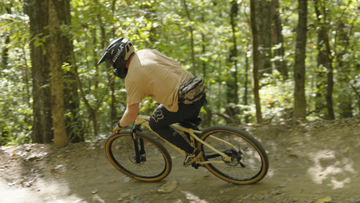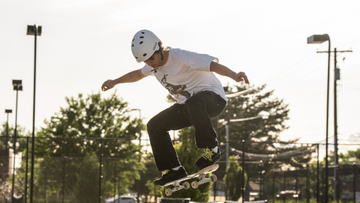The Ultimate Guide to Position on a Road Bike: Mastering the Art of Riding

Table of Contents
IntroductionUnderstanding Bike Fit and Riding Position
Essential Components of an Ideal Road Bike Position
How to Set Up Your Road Bike for Optimal Position
The Importance of Posture and Core Stability
Addressing Common Issues and Discomforts
Tips for Long-Distance Rides and Endurance Cycling
Training and Exercises to Improve Your Road Bike Position
Monitoring and Adjusting Your Position Over Time
Conclusion
1. Introduction
Welcome to our comprehensive guide on achieving the perfect position on a road bike. In this article, we will discuss the essential components of an ideal road bike position, how to set up your bike for optimal performance, and the importance of posture and core stability.
We will also address common issues and discomforts, provide tips for long-distance rides and endurance cycling, and suggest training exercises to improve your road bike position. By the end of this guide, you will have a solid understanding of how to optimize your position on a road bike for maximum comfort, efficiency, and performance.
2. Understanding Bike Fit and Riding Position
Bike fit is the process of adjusting your bike to suit your individual body proportions and riding style. A properly fitted bike allows for better power transfer, efficiency, and comfort while reducing the risk of injury. The key elements of a good bike fit include:
- Frame size
- Saddle height and angle
- Handlebar height and reach
- Pedal position and cleat alignment
Riding position refers to how your body is positioned on the bike while riding. There are three main riding positions in road cycling:
- The upright position (for casual and recreational riding)
- The endurance position (for long-distance cycling)
- The aerodynamic position (for racing and time trials)
3. Essential Components of an Ideal Road Bike Position
An ideal road bike position should:
- Minimize air resistance: A lower, more aerodynamic position helps reduce drag and increases speed.
- Optimize power output: Proper positioning allows for efficient transfer of power from your legs to the pedals.
- Maximize comfort: A comfortable position prevents muscle strain, fatigue, and discomfort.
- Reduce the risk of injury: Correct alignment and posture can help prevent repetitive stress injuries and discomfort.
4. How to Set Up Your Road Bike for Optimal Position
To achieve the best possible position on your road bike, follow these steps:
- Adjust the saddle height: With your heel on the pedal, your leg should be almost fully extended when the pedal is at its lowest point.
- Set the saddle angle: The saddle should be level or slightly tilted downward.
- Determine the correct reach: Adjust the stem length and handlebar height so your elbows are slightly bent when your hands are on the hoods.
- Check the handlebar width: The handlebars should be approximately the same width as your shoulders.
- Position the cleats: Align the cleats on your shoes with the ball of your foot and ensure your knees track straight when pedaling.
5. The Importance of Posture and Core Stability
Maintaining a proper posture and strong core stability is essential for achieving an optimal road bike position. Good posture allows for efficient power transfer, reduced fatigue, and minimized risk of injury. Follow these tips for maintaining proper posture on your road bike:
- Engage your core: Engage your abdominal muscles to provide support and stability for your upper body.
- Relax your grip: Hold the handlebars lightly to prevent hand fatigue and maintain better control.
- Bend your elbows: Keep your elbows slightly bent to absorb shock and provide better handling.
- Keep your back straight: Maintain a neutral spine by avoiding excessive arching or rounding of the back.
- Look ahead: Keep your head up and eyes forward to anticipate upcoming changes in terrain or obstacles.
6. Addressing Common Issues and Discomforts
Riding a road bike can sometimes cause discomfort or pain in various areas of the body. Here are some common issues and how to address them:
- Lower back pain: Ensure your saddle height and reach are properly adjusted, and engage your core muscles while riding.
- Neck and shoulder tension: Relax your grip on the handlebars, keep your elbows slightly bent, and adjust your handlebar height if necessary.
- Hand numbness: Change hand positions frequently, use padded gloves, and avoid gripping the handlebars too tightly.
- Kneepain: Check your cleat alignment, saddle height, and ensure your knees track straight when pedaling.
- Saddle discomfort: Experiment with different saddle shapes, use padded cycling shorts, and adjust the saddle angle as needed.
7. Tips for Long-Distance Rides and Endurance Cycling
To maintain an optimal position on your road bike during long-distance rides and endurance cycling, consider these tips:
- Stay hydrated: Carry enough water or electrolyte drinks to stay properly hydrated throughout your ride.
- Fuel your body: Consume easily digestible carbohydrates and protein during your ride to maintain energy levels.
- Take breaks: Allow your body to recover by taking regular breaks and stretching your muscles.
- Pace yourself: Maintain a steady, manageable pace to conserve energy and prevent muscle fatigue.
- Adjust your position: Change your hand and body position occasionally to prevent muscle strain and discomfort.
8. Training and Exercises to Improve Your Road Bike Position
Incorporating targeted exercises and training techniques can help improve your road bike position, comfort, and performance. Consider the following suggestions:
- Core strength exercises: Planks, bridges, and abdominal exercises can help improve your core stability and posture on the bike.
- Flexibility and mobility training: Incorporate stretching and yoga to increase flexibility and reduce muscle tension.
- Bike-specific strength training: Squats, lunges, and deadlifts can help build leg strength for more efficient power transfer.
- High-intensity interval training (HIIT): Incorporate HIIT workouts into your training plan to improve cardiovascular fitness and muscular endurance.
- Balance and stability exercises: Incorporate balance exercises like single-leg stands or stability ball exercises to improve overall stability and body control.
9. Monitoring and Adjusting Your Position Over Time
As your fitness level and riding preferences evolve, it's essential to monitor and adjust your road bike position accordingly. Schedule regular bike fit assessments, and consider making adjustments in response to changes in flexibility, strength, or riding goals.
10. Conclusion
Achieving the perfect position on your road bike is essential for maximizing comfort, efficiency, and performance. By understanding the key components of an ideal road bike position, properly setting up your bike, and maintaining good posture and core stability, you can optimize your riding experience.
Regularly addressing common issues and discomforts, incorporating targeted exercises and training techniques, and monitoring and adjusting your position over time will ensure that you continue to excel in your road cycling endeavors.
Frequently Asked Questions (FAQs)
-
How do I know if my road bike is the right size for me?
To determine if a road bike is the right size, stand over the bike with your feet shoulder-width apart. There should be approximately one inch of clearance between your crotch and the top tube. Additionally, ensure the reach to the handlebars is comfortable and allows for a slight bend in yourelbows.
-
How often should I have my bike fit checked?
It is recommended to have your bike fit assessed at least once a year or if you experience significant changes in flexibility, strength, or riding preferences.
-
Is it worth getting a professional bike fit?
A professional bike fit can be beneficial for riders of all levels, as it can help identify and correct issues that may be affecting comfort, efficiency, and performance. It may be particularly useful for those experiencing discomfort or pain while riding, or for competitive cyclists looking to maximize their potential.
-
What should I wear during a bike fit session?
Wear your typical cycling clothing and shoes, as these can affect your position on the bike. This ensures that the bike fit assessment accurately reflects your usual riding conditions.
-
How can I maintain my road bike position during long rides?
To maintain your road bike position during long rides, focus on engaging your core muscles, maintaining proper posture, and periodically changing hand and body positions to prevent muscle strain and discomfort. Stay hydrated, fuel your body, and take regular breaks to allow for recovery.














